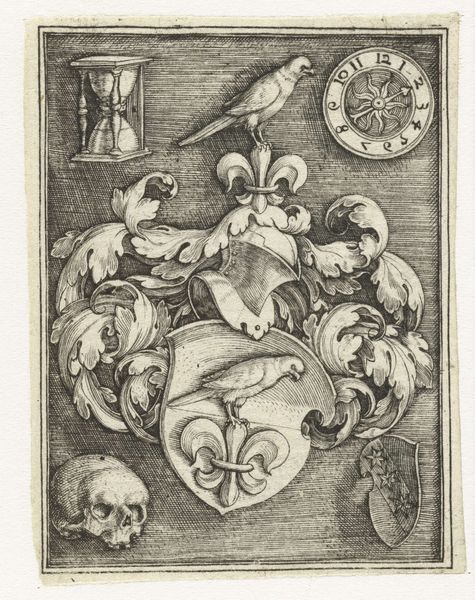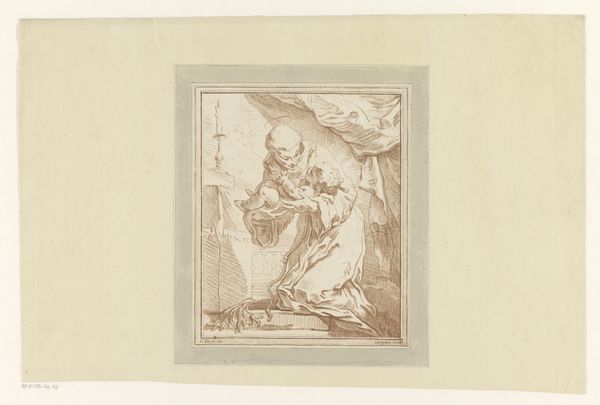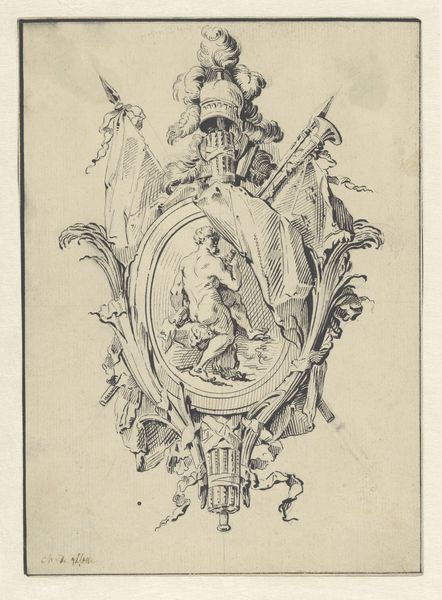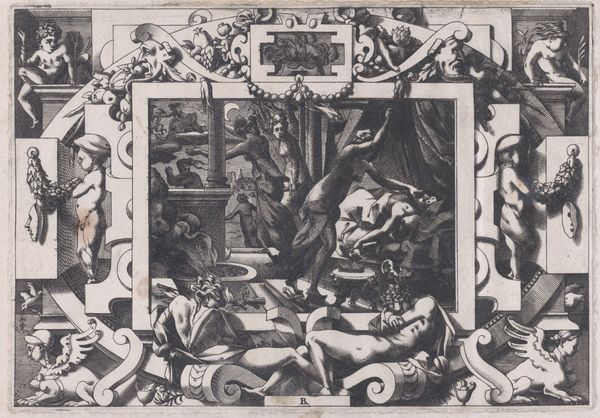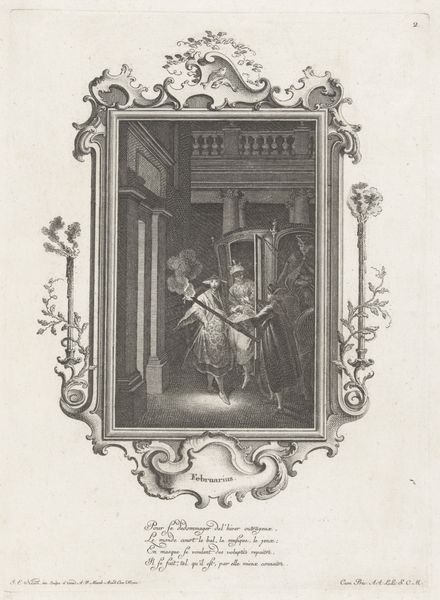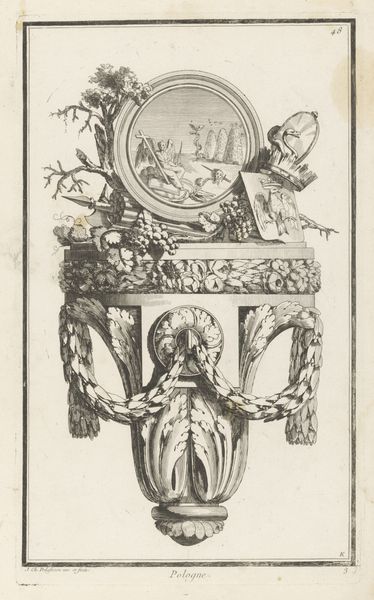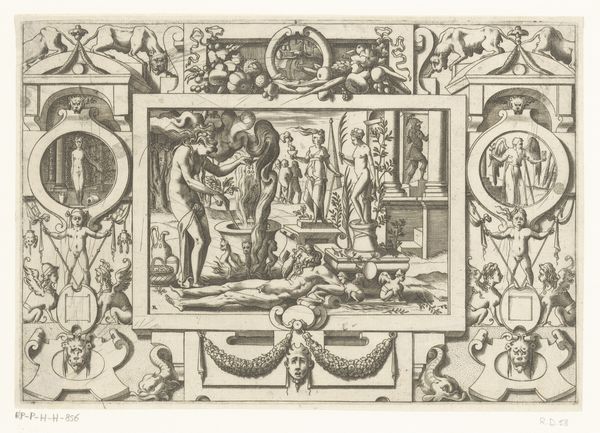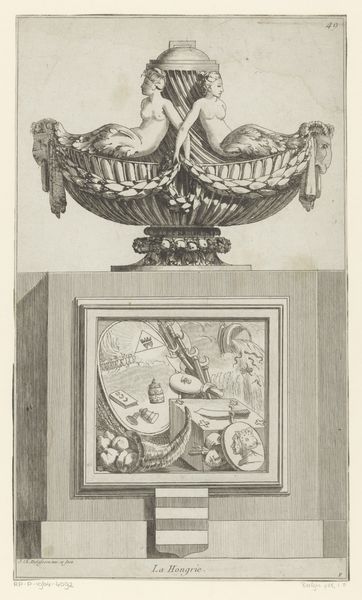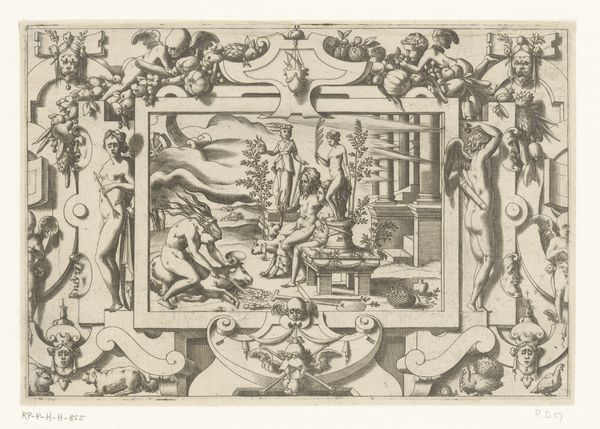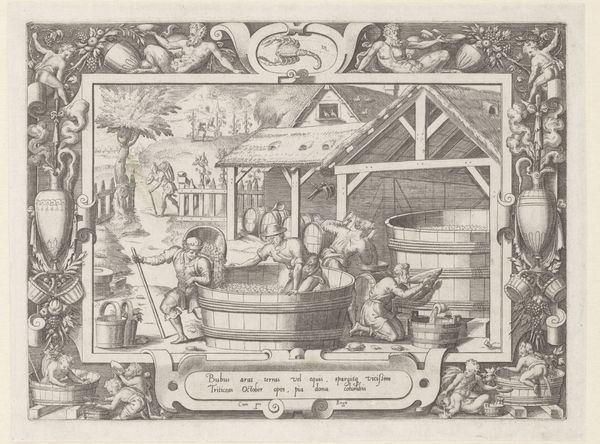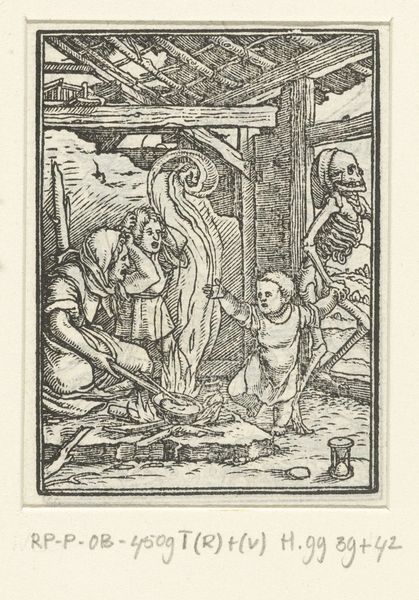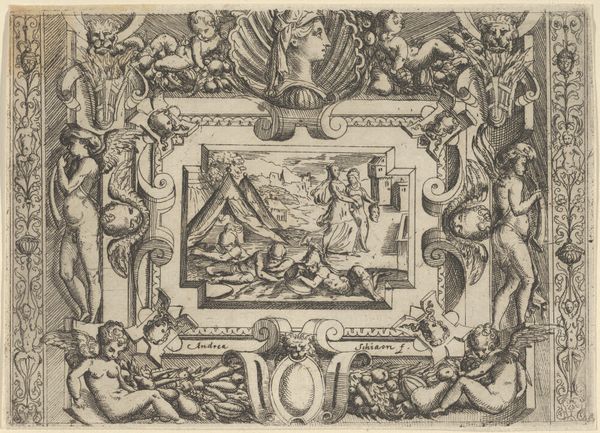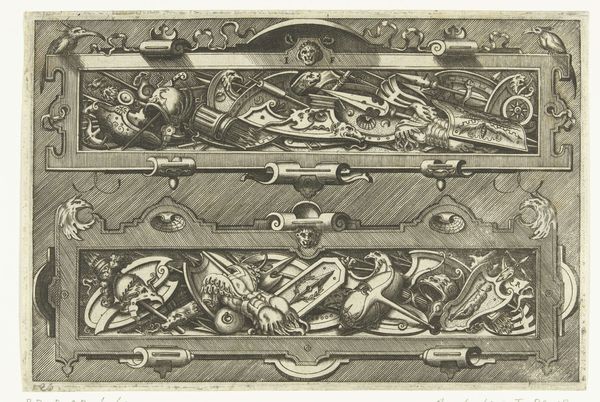
Vanitas Still Life with Scull with Laurel Wreath, Book and two Burning Candles 1645 - 1650
0:00
0:00
oil-paint
#
baroque
#
oil-paint
#
oil painting
#
vanitas
#
momento-mori
Dimensions: height 86.6 cm, width 86 cm, height 89.4 cm, width 88.7 cm
Copyright: Rijks Museum: Open Domain
Curator: Looking at this small painting by Jacob van Campen from around 1645-1650, I am struck by the…stillness. And I find myself wondering, where does van Campen expect us to find beauty? Editor: Well, right away I see more than stillness. It’s that almost suffocating density, all squeezed into this simulated niche! This work is a *Vanitas Still Life with Skull, Laurel Wreath, Book and Two Burning Candles*. I immediately zoom in on the composition itself: the claustrophobic layering feels very deliberate. Death here is breathing down our necks. Curator: A nice turn of phrase! It's difficult, this work is more complex than the simple morality lessons typical of the style. Vanitas paintings during the Baroque period were rife. Skulls, guttering candles – constant reminders of our mortality, like a morbid to-do list. Editor: I agree! But this composition does not feel entirely pessimistic. Look how the skull is crowned with a laurel wreath, the classical symbol of victory. Here we get not only physical demise, but triumph! Even the snake, almost invisible behind the wreath, is a symbol of rebirth. I interpret the image with some hope! Curator: Hmm, and maybe I am not interpreting the symbolism clearly enough. How the symbols relate to *each other*. I will take your view and push my reflections further down this line: rebirth can only happen once we truly come to terms with death, as natural a process as life itself. Van Campen isn’t just depicting mortality, he’s exploring a cycle. Editor: Absolutely. Think about it in the context of art: all of these objects, the wreath, the snake, the candles have rich artistic histories that span millennia. In short: they give emotional heft to something greater than the painting. As such, they overcome death. This painter knew well, like all the Vanitas authors, that images are forever. Curator: Forever as long as someone finds them compelling enough to gaze, perhaps. Editor: Yes... but art tends to survive and overcome the trials. Isn't it the ultimate victory?
Comments
No comments
Be the first to comment and join the conversation on the ultimate creative platform.
